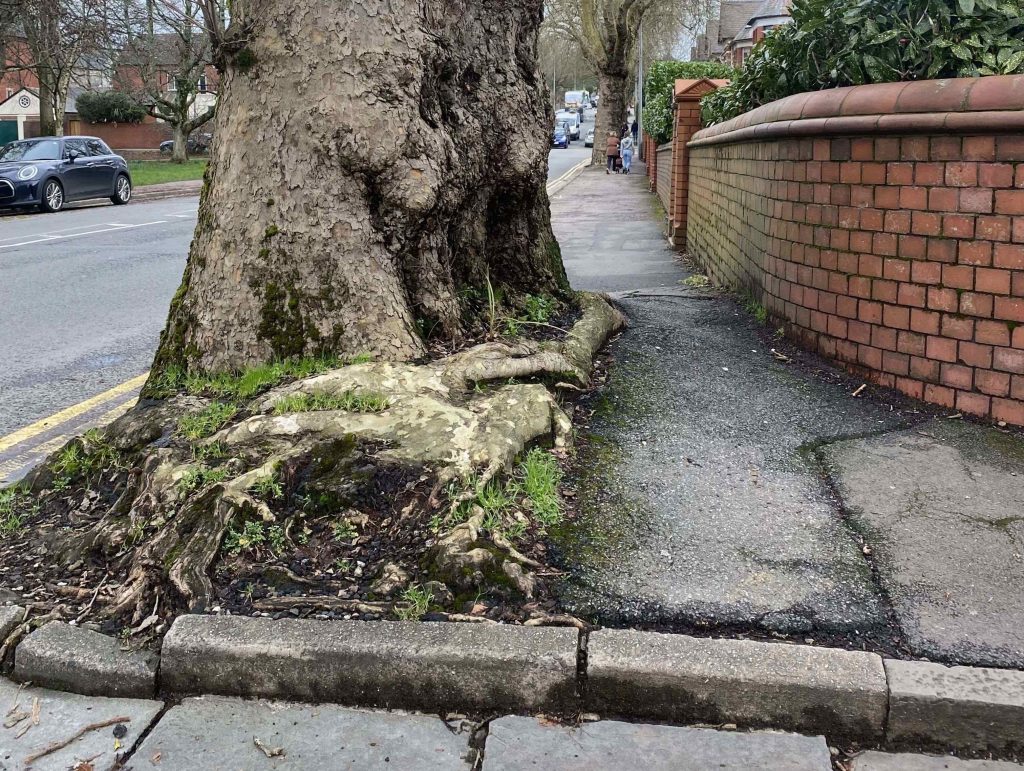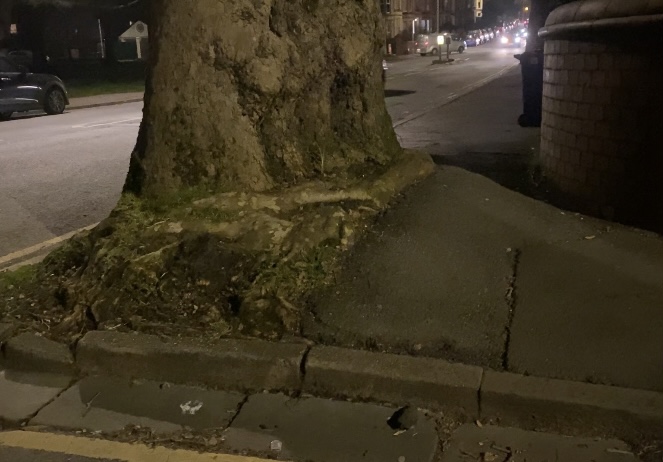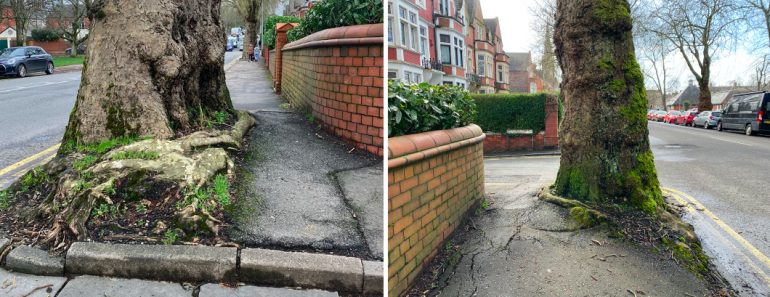Overgrown London Plane roots are making life hard for people with mobility issues or prams
RESIDENTS in Roath are divided over the “‘beautiful” trees that line Pen-y-Lan Road which are causing huge problems for many.
The London Plane trees add to the look of the road and bring important environmental benefits, but they are challenging for people with prams, or in wheelchairs and mobility scooters.
Tree roots protruding out of the ground create uneven pavements and narrow walkways forcing people to walk on the road, cross over, or struggle over them.
Resident Kelly Harrington said: “My pram can’t get through as it blocks the path, I have to walk on the road which is hazardous.”
The video below takes you along Pen-y-Lan Road.
You can compare pictures of the trees on Pen-y-Lan Road using the map below.
Most of the trees have caused the pavement to buckle, and one has now been re-paved to cover the exposed tree roots.
The tree causing the most disruption is on the corner of Westville Road and Pen-y-Lan Road. The roots create a steep incline and do not leave much room for people to pass by.


The issue is even worse at night when the tree is badly-lit making it difficult to see where the roots stick out and how steep the incline is.
Resident Vicky Mort said: “It’s difficult with my mobility scooter and I often have to avoid it. I love the trees but they do need to repair the paths around them.”
Others have had similar experiences. Resident Sue Hurrell said: “My daughter has almost been turned out of her powered wheelchair trying to get around this tree. We now opt for the other side of the road.”
Most residents believe the trees add character to the street. They are not protected under tree protection orders but they don’t want them to be cut down.
Instead they suggest the council could widen the pavement, or increase the number of crossings along the road to make it easier for people to use the flatter Western-side of the road.
Resident Andrew Rickson said: “I’m glad the council has no plans to remove the trees, but I’m concerned that some residents find the roots difficult to negotiate. Perhaps the council could consider extending the footpath out into the carriageway and reducing the speed of the traffic, or introducing more crossings so it is easier to cross the road.”
The council stressed the importance of the trees to the environment and said they were planted 50 years ago when planting methods were very different.
Root barriers have been installed to prevent damage to the pavements and the council is now putting more thought into where it is planting trees with an eye to the future.
The London Planes took up far less space when they were first planted and there was less traffic on the roads.
Now, Pen-y-Lan Road has a high footfall. It’s along the edge of Roath Recreation ground. The park has popular sports pitches, a playground, and is home to Penylan library and community centre, which has a gym, soft play, sports hall, and meeting room.
It’s also popular for runners, and is near Wellfield Road, a popular brunch hot-spot, and has four well-used bus stops.
London Plane trees
The Woodland Trust says London Planes thrive in urban areas with little light and surrounded by concrete, unlike most trees. Their environmental impact is also important by cleaning air and absorbing emissions.
But they are known for their large, ever-growing roots and tend to outgrow their location.
In some areas, London Plane trees have been replaced by Amelanchier lamarckii trees. They have a much finer root system, putting less pressure on the soil.



